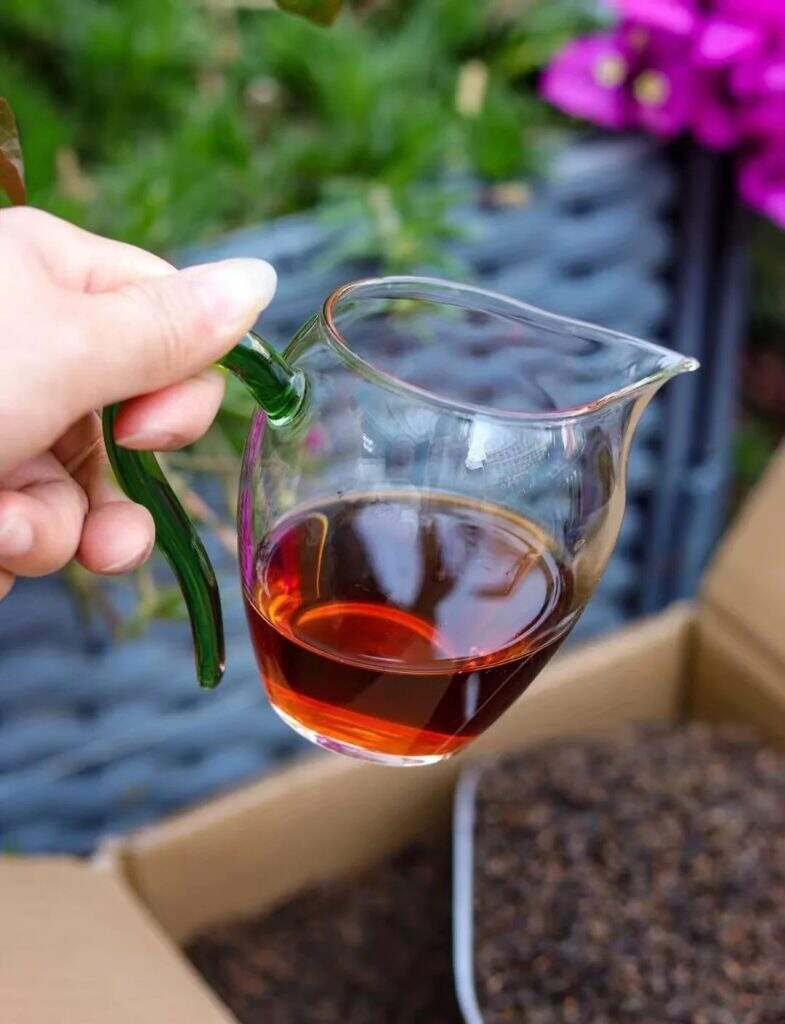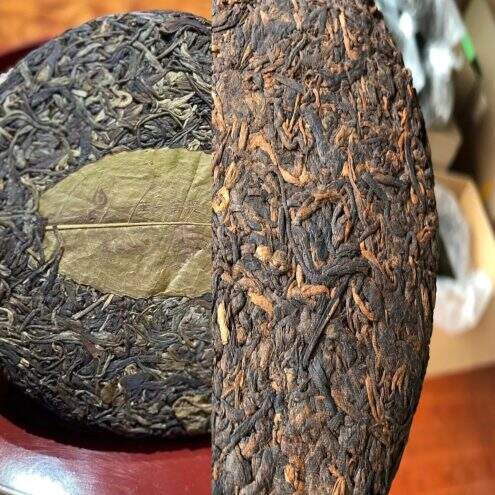Raw Pu-erh vs. Ripe Pu-erh: The Ultimate Tea Showdown (And Which One You Should Choose)
Hey tea lovers! Ever stared at a Pu-erh tea menu feeling like you’re decoding ancient hieroglyphics? “Raw? Ripe? Fermented? Aged?” Don’t worry—you’re not alone. Today, we’re breaking down the raw Pu-erh vs. ripe Pu-erh debate in plain English. Whether you’re a tea newbie or a seasoned sipper, this guide will help you pick your perfect brew. Let’s dive in!


Part 1: The Secret Sauce – How They’re Made 🧑🔬
Imagine tea-making as a Marvel movie. Raw Pu-erh is the OG hero, while Ripe Pu-erh is the high-tech reboot with a twist.
Raw Pu-erh Tea:
The Process: Fresh leaves → Pan-fried (to stop oxidation) → Rolled → Sun-dried → Pressed into cakes.
The Magic: It’s like nature’s slow-cooker recipe. Raw Pu-erh ages naturally over years (even decades!), developing complex flavors through microbial fermentation. Think of it as the “fine wine” of tea.
Ripe Pu-erh Tea:
The Plot Twist: Take raw tea, add water, pile it up, and let it ferment under controlled heat for 40-60 days (a.k.a. “wo dui” fermentation).
The 1973 Game-Changer: This method was invented to mimic aged raw Pu-erh’s mellow vibe—but way faster. It’s like speed-dating for tea fermentation!
Why It Matters:
Raw = Unedited director’s cut (pure, evolving).
Ripe = Remastered version (smooth, ready-to-drink).
Part 2: Looks Can Be Deceptive – Spotting the Differe
Raw Pu-erh:
Looks: Young cakes are vibrant green or dark jade. Older cakes fade to amber-brown (like a vintage leather jacket).
Brewed Tea: Golden sunshine in a cup! Clear, bright liquor with greenish hints.
Leaves After Brewing: Soft, flexible, and lively—like they’re ready for a second act.
Ripe Pu-erh:
Looks: Moody and mysterious—deep burgundy-brown with occasional golden flecks (aged ones might look like dragon scales).
Brewed Tea: Thick, blood-orange to mahogany broth. So dark, you could write poetry in it.
Leaves After Brewing: Dark, broken, and kinda “tired”—but don’t judge! Flavor’s hiding in those crinkles.
Pro Tip: Shine your phone flashlight through the brew. Raw = glowing honey. Ripe = moody lava lamp.
Part 3: Flavor Wars – Tastebuds, Prepare Yourselves! 👅
Raw Pu-erh – The Wild Child:
First Sip: A punch of grassiness, floral notes, and a bitter kick (like biting into a dark chocolate-covered orchid).
Aftertaste: Sweetness slams in like a mic drop. Your mouth waters, your senses buzz—it’s a caffeine-powered joyride.
Aging Bonus: Over time, bitterness mellows into earthy, honeyed richness. A 10-year-old raw Pu-erh? Think “wise old sage with stories.”
Ripe Pu-erh – The Comfort Blanket:
First Sip: Velvety smooth, with woody, chocolatey, or nutty flavors. Zero bitterness—just cozy vibes.
Funky Bonus: Some get a hint of wet earth or mushrooms (in a good way, like truffle fries).
Jasmine Ripe Pu-erh Hack: Add flowers during fermentation for a floral hug in every sip.
Verdict:
Raw = For adrenaline junkies who love bitter-to-sweet rollercoasters.
Ripe = For anyone craving a liquid hug.
Part 4: Which Tea Were You Born to Drink? 🧘
Choose Raw Pu-erh If You…
✅ Have an iron stomach (or want to flex your “tea tolerance”).
✅ Love collecting aged teas (it’s like a retirement plan for your tastebuds).
✅ Crave that “alive,” changing flavor profile (each year = new personality).
Choose Ripe Pu-erh If You…
✅ Are a midnight snacker/coffee addict needing a gentler caffeine fix.
✅ Want a tea that won’t fight your stomach acid.
✅ Dig dessert-like flavors without the sugar crash.
Wildcard: Mix both! Raw in the morning for a kick, ripe at night to unwind.
Part 5: The Million-Dollar Question – Which Tastes Better? 💰
Trick question! It’s like asking “Pizza or tacos?” Here’s the cheat code:
Newbies: Start with ripe (friendly flavors) or young raw (affordable and approachable).
Adventurers: Go for aged raw Pu-erh (pricey but life-changing).
Budget Hack: Buy a small sample of both. Tea shops often sell “mini cakes” for under $5!
Part 6: Wait, What About Health? 🩺
Both teas are antioxidant rockstars, but:
Raw Pu-erh: Higher in catechins (good for metabolism), but might irritate sensitive stomachs.
Ripe Pu-erh: Packed with probiotics from fermentation (gut health MVP).
Tea Myth Busted: No, Pu-erh won’t magically melt belly fat—but it’s a guilt-free sip!
Final Sip… ☕
Raw Pu-erh is the untamed artist—unpredictable, bold, and aging like a Hollywood legend. Ripe Pu-erh is the reliable best friend—comforting, steady, and always there for you.
Ready to experiment? Grab both, brew them gongfu style, and let your tastebuds vote!
P.S. Found your tea soulmate? Tag us on Instagram with your #RawVsRipe moment! 🏷️













Add comment
You must be logged in to post a comment.